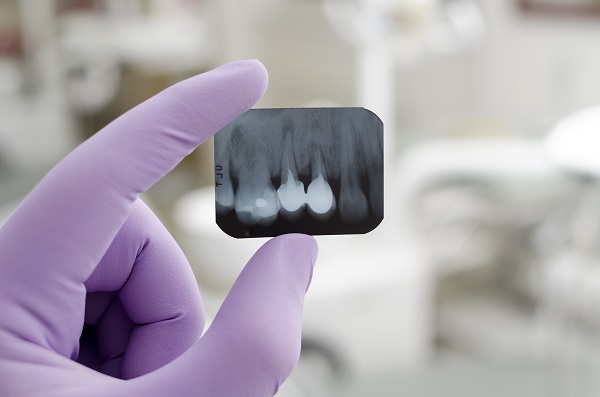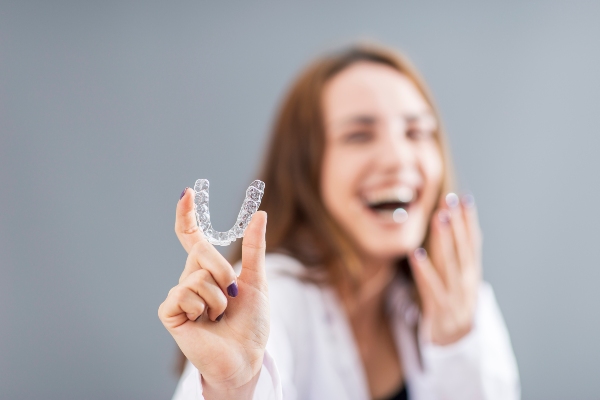Digital X-Rays and Radiation

Digital x-rays reduce your exposure to radiation by up to 80% compared to traditional ones. X-rays are an essential diagnostic tool dentists use to examine the insides of a tooth, gum tissues, and the bone structures in the mouth.
Getting a digital x-ray is a non-invasive procedure that does not cause any pain. It quickly produces the images needed to address the patient’s mouth, eliminating the need for multiple visits or waiting for results.
X-rays have been used in dentistry for over a century. Traditional x-rays involve using a film to capture images of the patient’s internal structures. It often took hours to process the film and get the results back. Digital technology has made the process a lot smoother and more affordable. The fact it lowers the patient’s exposure to radiation is a nice bonus.
While traditional x-rays leave patients exposed to more radiation, it should be noted that the levels of radiation patients are exposed to are less than what sunlight exposes them to daily. It is a negligible amount of radiation, but less is viewed as better since radiation is bad for the body.
How digital x-rays help to keep your mouth healthy
The process of getting digital x-rays usually involves wearing a large lead blanket or apron that shields the rest of your body from radiation. An x-ray sensor is then placed in the patient’s mouth to take digital images of the patient’s internal structures.
The type of sensor used varies depending on the type of x-ray being performed. These sensors typically do not cause any discomfort, but they can trigger some people’s gag reflex. Children are more likely to feel uncomfortable when x-rays are taken due to their smaller mouths and stronger gag reflex. Patients with sensitive gag reflexes should let their dentist know so accommodations like using smaller sensors can be made.
Some of the commonly used types of x-rays in dentistry include:
- Bitewing x-rays: These are typically taken once a year to detect cavities inside and between teeth. It can also be used to evaluate the bone structures that hold teeth in place
- Periapical x rays: Also known as PAs, these are used to get a complete picture of a tooth’s internal structures from its roots to the top of its crown. They are typically recommended when a patient complains of symptoms that originate from a specific tooth. PAs can be used to detect deep decay, damage to bone structures around a tooth, and abscesses
- Occlusal x rays: These are used to examine the internal structures of the floor or roof of a patient’s mouth. They can be used to detect tumors, jaw abnormalities, impacted teeth, and supplemental teeth
- Panoramic x rays: These are recommended every three to five years to paint a complete picture of a patient’s mouth. They are used to prepare for surgical procedures or orthodontic devices
Digital x-rays are safe
Digital x-rays help to evaluate the internal structures in your mouth. Call or stop by our Reston clinic to learn more about how digital x-rays work.
Request an appointment here: https://www.orthodonticprecision.com or call Precision Orthodontics & Pediatric Dentistry at (703) 391-8800 for an appointment in our Reston office.
Check out what others are saying about our dental services on Yelp: Digital X-Rays in Reston, VA.
Recent Posts
Invisalign® is a system of transparent aligners that are custom-made to fit a person's teeth. Like braces, it corrects alignment by delivering different levels of pressure to individual teeth. Since everyone has a unique smile, you will need a custom-made pair of Invisalign clear aligners. This article provides information on how clear aligners are custom-made…
Invisalign® aligners are a popular alternative to conventional metal braces. Although Invisalign offers more comfort than metal braces, it is impossible to eliminate the chances of mild pain or discomfort. The risk of discomfort seems to be highest during the first week of wearing invisible teeth aligners.A person’s pain tolerance also determines the degree of…
Thinking about getting Invisalign®? Read on to learn some of the benefits of choosing this teeth-straightening treatment. Most people want a beautiful smile, but many people do not want to undergo teeth-straightening treatments that involve conspicuous metal braces. Fortunately, another option called Invisalign involves wearing transparent aligner trays over time to correct tooth misalignment. A…
If you are considering Invisalign® treatment for teeth straightening, you will likely want details about the process. Read on to learn about what happens during and after Invisalign treatment. When you visit the orthodontist for a consultation, they will explain the specifics of what to anticipate during and after treatment. They will also discuss using…


